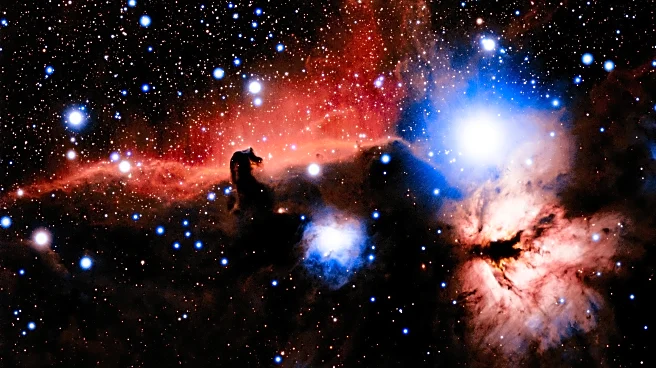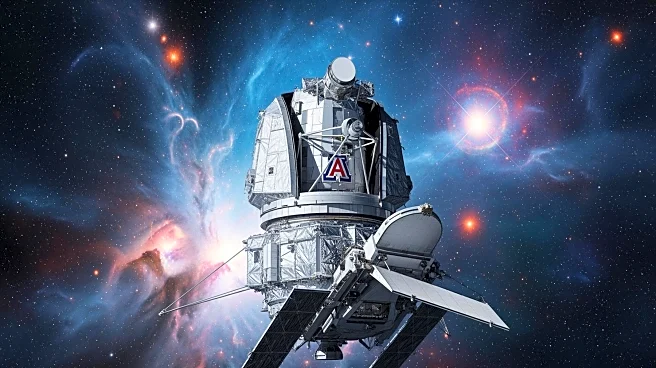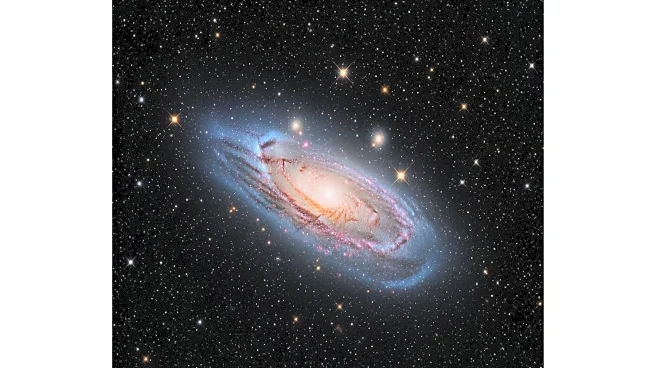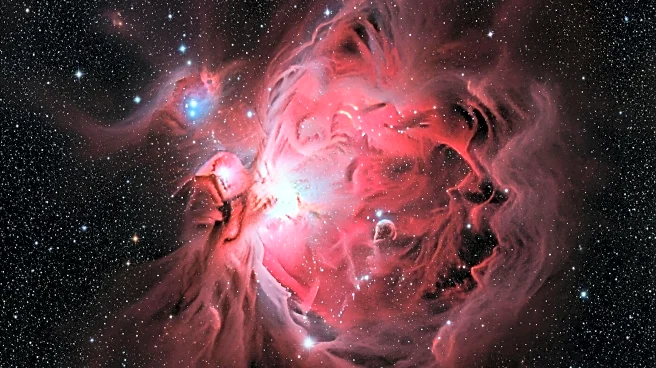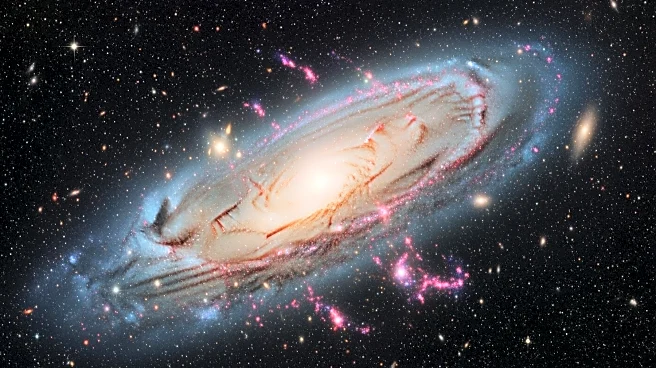What's Happening?
Astronomers have created the first three-dimensional map of the atmosphere of WASP-18b, an ultra-hot Jupiter located 400 light-years from Earth. Using the James Webb Space Telescope (JWST), researchers applied a technique called 3D eclipse mapping to
chart temperature variations across the planet. This method allows scientists to probe latitude, longitude, and altitude simultaneously, providing unprecedented detail. The study, led by the University of Maryland and Cornell University, reveals distinct temperature zones, including areas where water vapor breaks apart due to extreme heat.
Why It's Important?
The ability to map the atmosphere of exoplanets in 3D opens new avenues for understanding their composition and dynamics. This technique could be applied to other exoplanets, including smaller, rocky worlds, enhancing our knowledge of planetary systems beyond our own. The findings from WASP-18b contribute to the broader field of exoplanet research, offering insights into atmospheric processes and the potential for habitability. As more exoplanets are studied using this method, scientists can compare their atmospheres to those of planets in our solar system, refining models of planetary formation and evolution.
What's Next?
Future observations with JWST could further refine the spatial detail of 3D eclipse maps, allowing for more precise studies of exoplanet atmospheres. Researchers aim to apply this technique to a wider range of exoplanets, including those without atmospheres, to map surface temperatures and compositions. The continued development of 3D mapping methods will enhance our understanding of exoplanetary environments and their potential for supporting life.
Beyond the Headlines
The study of WASP-18b's atmosphere highlights the capabilities of JWST in advancing exoplanet research. By providing detailed temperature maps, scientists can explore atmospheric phenomena predicted by theory but previously unobservable. This research underscores the importance of technological advancements in expanding our knowledge of the universe.





